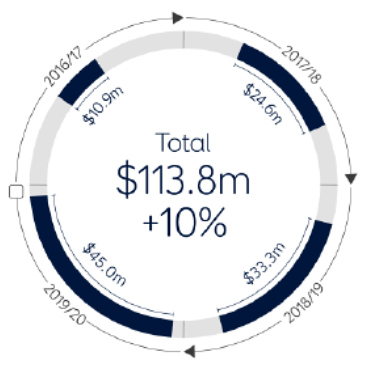Everyone has their views when it comes to the 2016 Budget.
“Funding lift a thrill for scientists,” NZ Herald.
“Top-ups for research bodies part of (business) growth agenda,” Minister Steven Joyce.
“It’s likely that business will be feeling more rather than less confident,” BusinessNZ CEO Kirk Hope.
“Budget 2016 held few surprises for business and sent a strong signal that the New Zealand economy is in good health,” EMA’s CEO Kim Campbell.
While the responses certainly give us hope, but what does it really mean for our largely SME-type manufacturing businesses?
NZ Manufacturers and Exporters Association (NZMEA) CEO Dieter Adam was less enthusiastic, saying that Budget 2016 was fiddling at the edges, saying “There was an opportunity given the really good fiscal position, to pump more money into infrastructure development, and that’s obviously not going to happen.”
“Tax credits for research and development would have really helped exporters who were against overseas competitors that received substantial subsidies for R&D,” he said.
So what does this all mean for HERA which performs industry research on your behalf? With our focus on ‘driving industry innovation’ for our members, it was obvious that the science and innovation budget was the first place we wanted to delve into – and overall, the outlook is good. It’s reported this area will receive an additional $410.5m over four years, boosting annual science investment to $1.6b by 2020.
The main beneficiary of this all goes to the MBIE Contestable Science Fund (since renamed Endeavour Fund to commemorate Captain Cook’s 250th anniversary of his scientific voyage to New Zealand).
As a mission-led fund, we’ve successfully secured its financial support for our steel construction and AGGAT research programmes in the past, so there’s certainly no reason to think that we couldn’t do it again.
Now receiving $113.8m additional funding over the next four years and bringing total investment to $200m by 2019/20. It signals a 10% increase over four years with the 2016/17 round receiving an additional $10.9m (6%) on top of the existing $172.3m (see diagram below) – ringing true the statement of being a ‘thrill to scientists.’
However if you know how oversubscribed this fund is, then you’re aware that a large number of excellent, future-focused program applications will not be funded – competition is stiff.
It’s good to see the fundamental research-oriented Marsden Fund has also grown by $66m over four years, providing a real boost to more blue sky oriented research landscape which I believe New Zealand needs to make a contribution to, so all thumbs up here to the Government!
The new Regional Research Institutes (RRI) programme, which has the potential to be of significant interest to our members and could have a real effect on the high tech development of our regions is also getting a funding boost of $40m over four years with an extra $10m being available in the 2017/18 year subject to special cabinet approval. And while we were part of an unsuccessful JV-based application in the $5m 2016/17 round, it’s still good news for science innovation as a whole.

With our industry members’ hat on, I was very much looking forward to finding information on an increase in the Callaghan Innovation (CI) R&D Grant Scheme. Last year, it had quite a boost and ended up sitting at $161m per year, however this time around it stayed unchanged for the next four years.
In the absence of a simple to administer R&D tax credit scheme, this scheme plays a key role in getting member companies into transformational long term R&D commitments, and although some of our members were successful in accessing this fund – generally their feedback has been negative when it comes to readily accessing the funding pool.
Frustratingly as we’ve reported before, as an industry levy-funded research provider, we’re specifically excluded from accessing this fund even if it’s been confirmed by the Minister as “an anomaly as there’s simply not enough funds around”, and something we will continue to advocate for.
So with no real change in this area of the industry R&D Grant Scheme, I agree with Dieter Adam that an opportunity was missed to effectively invest in the transformation of already established companies. In saying all of this, we can’t say that Vote Science & Innovation hasn’t received a positive funding boost overall – it certainly has.
What needs to be the overarching message from our industry is that investing in the development of a productive high wages paying manufacturing sector with export focus needs to become a much higher priority if the Minister’s National Statement of Science Investment 2015-2025 high level goal to: “Encourage New Zealand’s business sector to double its expenditure in R&D to 1% of GDP” is to be achieved.

